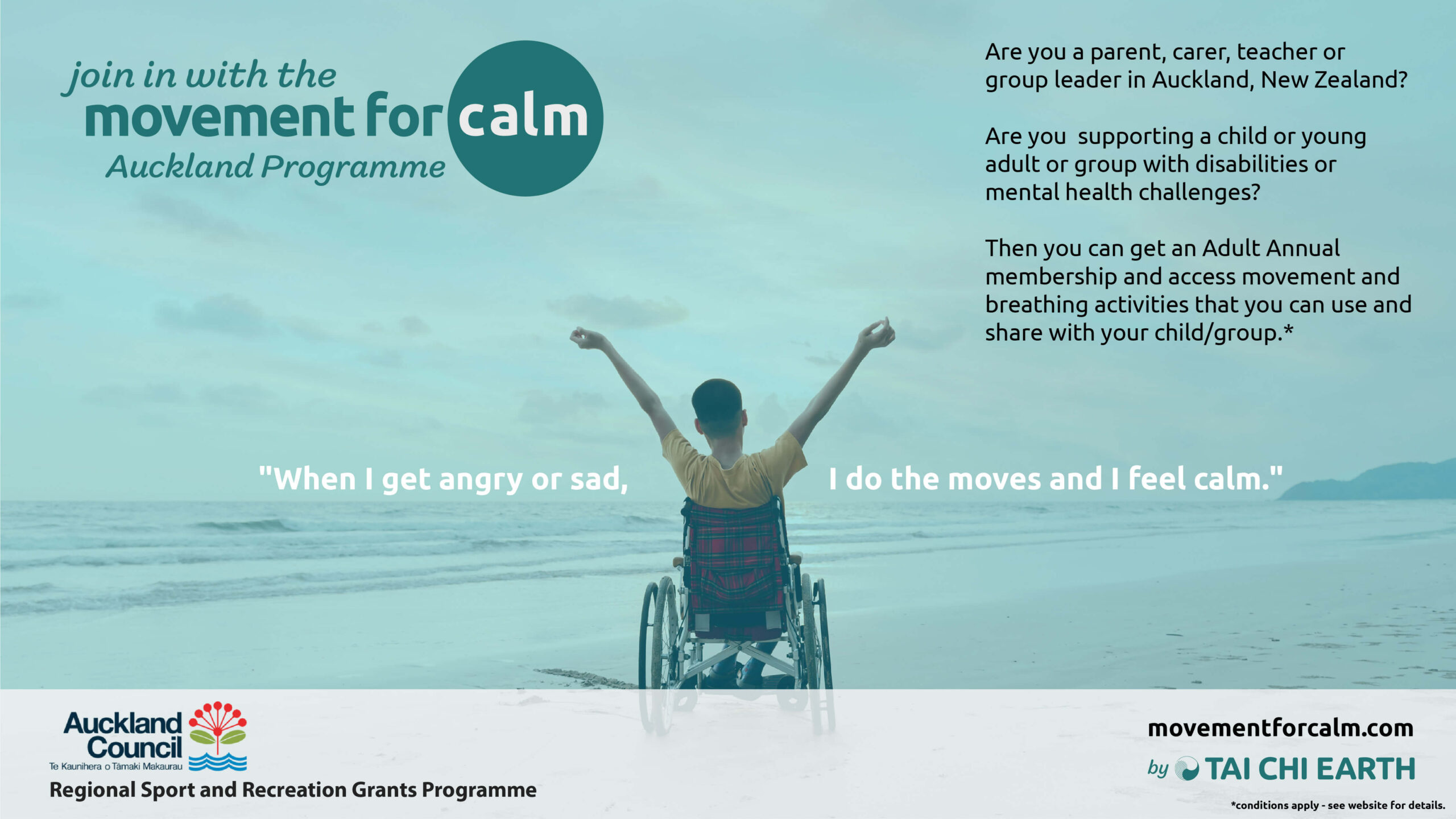Children with disabilities
I did a lot of work with children in a special educational needs setting running individual and small group sessions targeting key areas of their development.
The Physical and Emotional Development Programme – PEDP – is made up of a mixture of tai chi and qigong moves which have been chosen to specifically work on key areas. The areas of focus are – Awareness, Balance, Coordination, Core-strength and Self-regulation. With six moves in each section the short routines are easily accessible while providing variety and enjoyment for the participant whilst working on their key skills.
Now that we have put the PEDP online, these simplified tai chi and qigong exercises can be effectively implemented for a number of participants in a cost effective way. The PEDP can provide an extra development activity for in particular, students with disabilities and for early years. The PEDP can be overseen by an Occupational Therapist, Physiotherapist, SENCO, SEN Teacher, Early Years Teacher or parent who can decide which focus to work on and monitor progress and make any modifications needed for the individual participant. The great part is that the routines are easily accessible on screen and are easy to follow along to allowing for more regular practice throughout the week.
I have run the PEDP with students who have been highlighted by Occupational Therapists and Teachers as needing extra support in one or more of the areas and it has worked well as an addition to the students’ other physical programmes and has provided extra support for key physical and social/emotional targets. The students have enjoyed doing the programme in school and often continued their practice at home. The repetition of the small sets meant that many students came to remember the moves and visibly enjoyed gaining more skills and confidence.
I generally focused on two areas at a time e.g balance and coordination or awareness and core strength but equally one area can be focused on for the student to gain familiarity and repeated practice with the moves.
The self regulation moves have been used both alongside another area as well as individually to support students with anxiety and social, emotional behavioural difficulties. The Self regulation section allows them to practice simple qigong moves to link movements with their breathing to find ways to calm. The more this is practiced as a skill the quicker they are able to harness the skill when they really need it. So a daily run through of the moves is ideal to help generally be calmer but also to then be able to harness one or more of the moves when most needed when feeling a build up of stress or anxiety.
Physical Development
After doing the Tai Chi exercises he (child in KS1) used both hands to pull out a box from a cupboard. He usually needs prompts to use both hands.”
Teacher - Primary Special School
This is what a teacher said to me after a student had been working on the Awareness and Coordination sections of the programme. This was just so great because it showed just how the target need was being achieved – that repetition of exercises using both hands and focus on each side of the body.
Emotional Development
The self regulation moves have been used both alongside another area as well as individually to support students with anxiety and social, emotional behavioural difficulties. The Self regulation section allows them to practice simple qigong moves to link movements with their breathing to find ways to calm. The more this is practiced as a skill the quicker they are able to harness the skill when they really need it. So a daily run through of the moves is ideal to help generally be calmer but also to then be able to harness one or more of the moves when most needed when feeling a build up of stress or anxiety.
When I get angry or sad, I do the moves and I feel calm."
Student - Danecourt School
5 Areas of Development
Awareness
Spacial awareness, internal awareness of body, awareness of body parts in relation to each other.
Balance
Weight distribution, weight transference between feet, balanced body, balanced mind.
Coordination
Crossing the midline, hand-eye coordination, appropriate weight shifts, bilateral use of arms and hands, combining upper and lower body.
Core Strength
Posture awareness, flexibility, core stabilisers, good sitting.
Self-regulation
Emotional awareness, breath awareness with movements, awareness of self affects others and self affects own wellbeing.
Where to start
We did a lot of work with this Physical and Emotional Development Programme. We have since incorporated a simplified version of this programme into the movement for calm membership which makes it easier for individuals to use and gain









